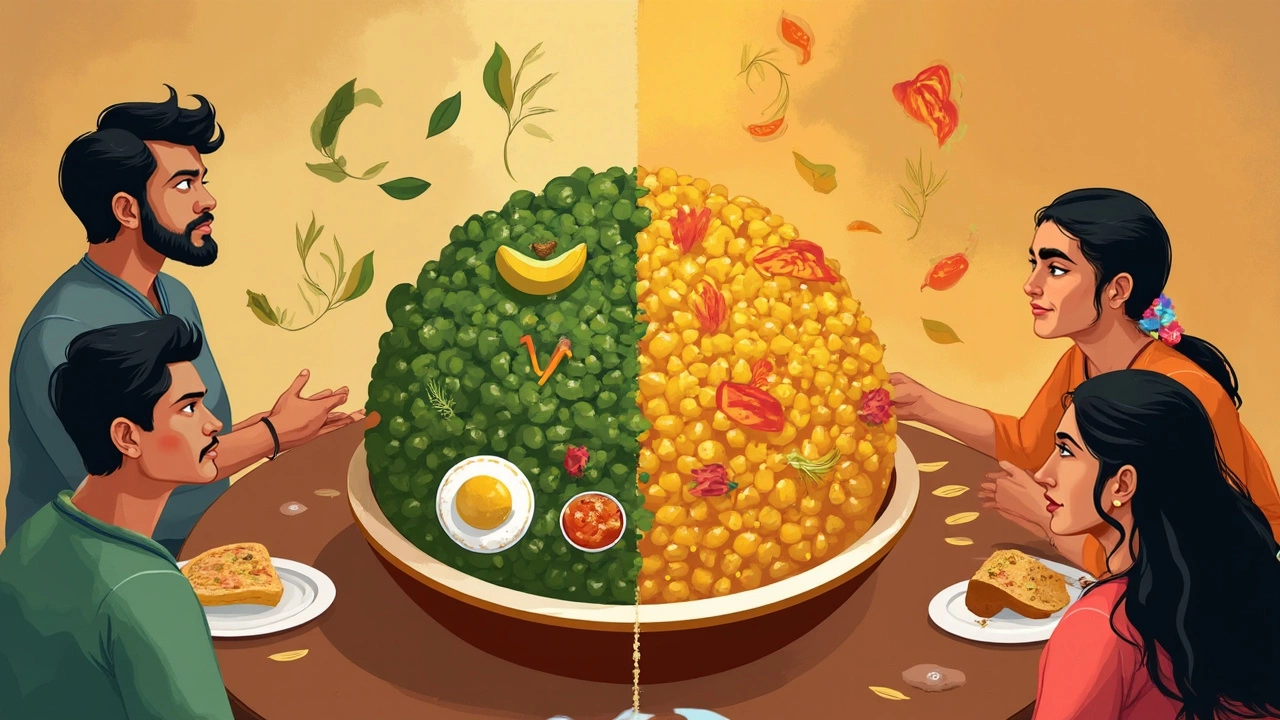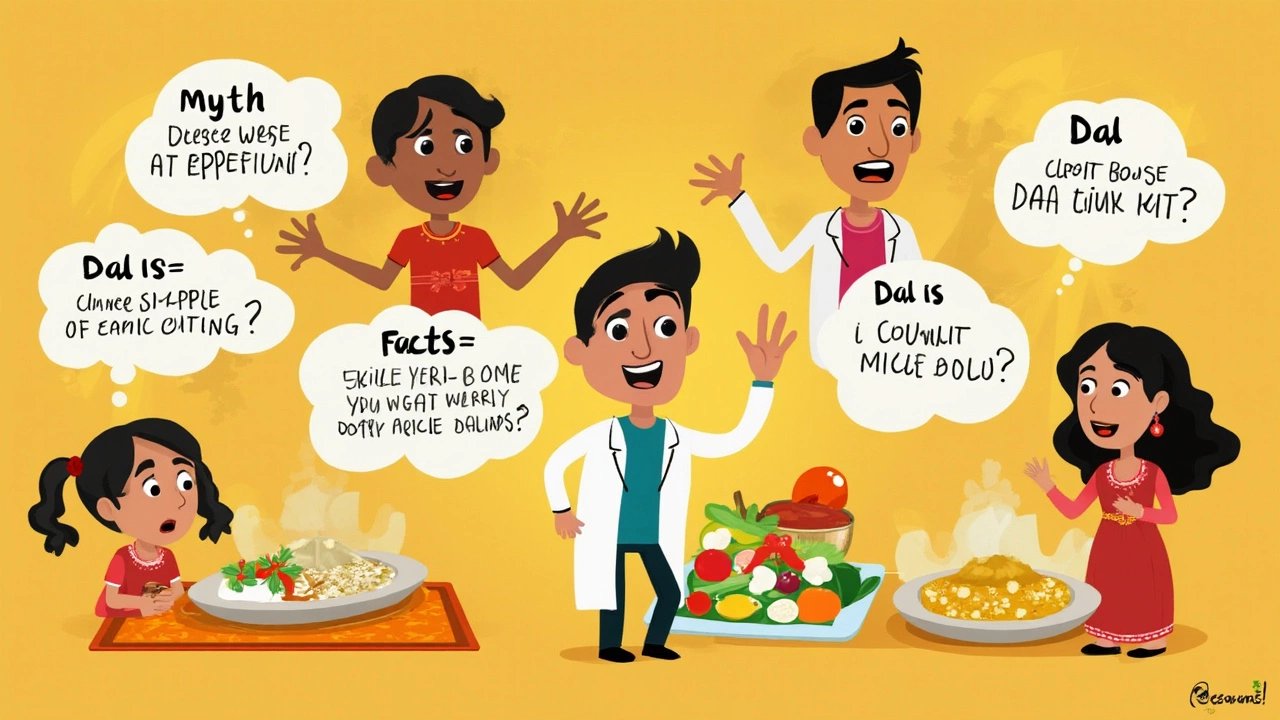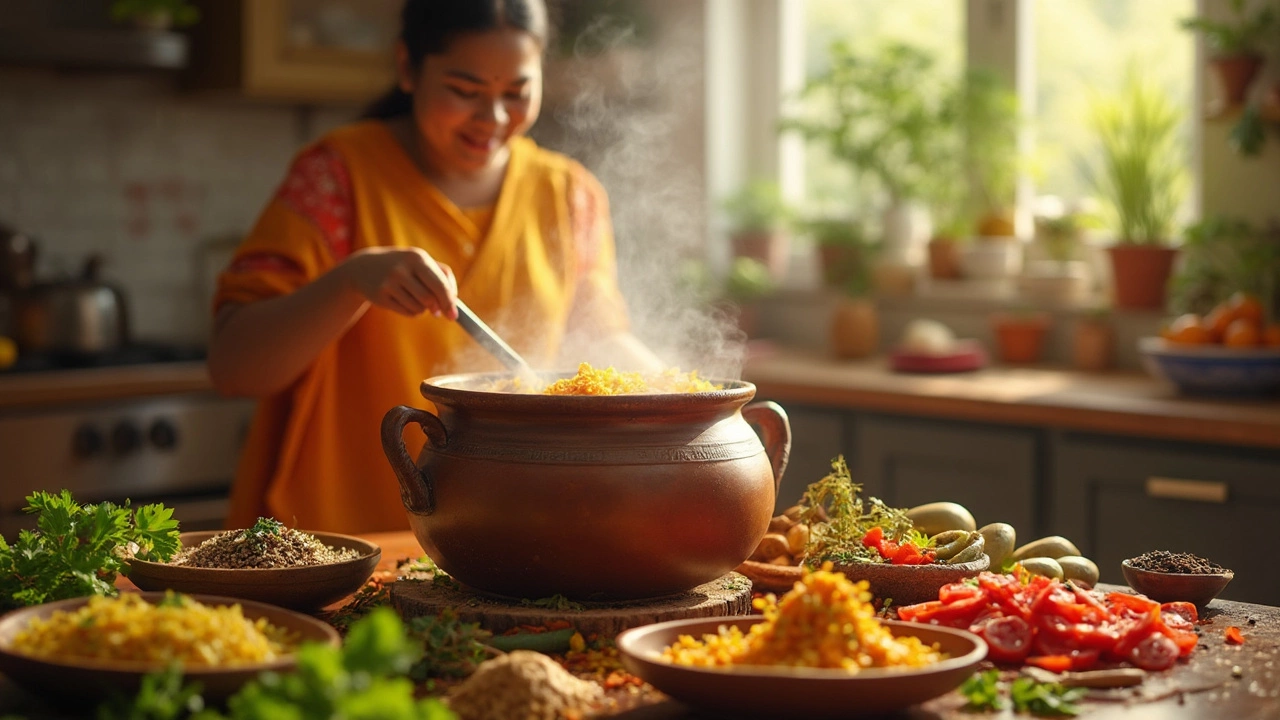Everyone has an opinion on dal, but it's not always clear which side to believe—some folks call it a superfood, others whisper it's just carbs and calories. So, should you add dal to your guilt-free meals or think twice before loading your plate?
Here’s the quick reality check: dal, or lentils, are packed with plant protein, fiber, and essential vitamins. Most families cook dal almost every day, and there’s a reason why—it's filling, cheap, and keeps you energized for hours. Plus, the basic version of dal is anything but complicated or unhealthy.
But here's the catch—what you throw into your dal matters just as much as the dal itself. Heavy oil, cream, or loads of fried garnishes can flip its health score upside down. Keeping it simple is usually the smarter (and tastier) move.
- What is Dal, Really?
- Nutrition Facts: Healthy or Not?
- When Dal Turns Junky
- Tips to Keep Dal Healthy
- Everyday Dal Recipe: The Simple Way
What is Dal, Really?
Dal is just the Indian word for lentils, but it covers more than one kind—think red (masoor dal), yellow (moong dal or toor dal), black (urad dal), and even chickpeas and split peas in some kitchens. You’ll spot dal in every corner of India and South Asia, whether it’s cooked plain, soupy or thick enough to eat with bread.
At its core, dal is about simmering dried lentils, split peas, or beans with water, a pinch of salt, and just enough spices. But don’t mix it up with generic junk food; traditional dal is far from it. Most Indian homes serve dal alongside rice or flatbread, making it a dependable, nutritious centerpiece for lunch or dinner.
Lentils are one of the world’s oldest crops. Archaeologists have found traces of lentils from as far back as 8000 BC! They’ve stuck around for good reasons—they cook fast, don’t cost a fortune, and don’t need fancy fridge storage. That’s a big deal in hot places where fresh meat or even vegetables spoil fast.
If you compare dal types side-by-side, you’ll notice slight differences in taste, texture, and color. Here’s a quick look at some of the most popular kinds:
| Type | Common Name | Main Uses |
|---|---|---|
| Masoor Dal | Red Lentil | Quick curries, soups |
| Moong Dal | Yellow Lentil | Simple soups, khichdi |
| Toor Dal | Pigeon Pea | Classic sambar, dal fry |
| Chana Dal | Split Chickpeas | Thick dals, snacks |
| Urad Dal | Black Gram | Dal makhani, dosa batter |
No matter which variety you pick, dal is a staple in millions of homes for good reason—it’s filling, convenient, and can swing from a basic meal to a special feast just by switching up the spices and toppings.
Nutrition Facts: Healthy or Not?
Let’s get straight to what matters—what’s actually inside that bowl of dal you eat so often? For a regular cup of cooked dal (about 200 grams), you’re looking at:
- Roughly 9 grams of protein (pure plant power, especially if you’re vegetarian or vegan).
- About 14 grams of dietary fiber. That’s not just good for digestion, it also helps you feel full.
- Usually less than 1 gram of fat, unless you add loads of oil or butter (ghee) during cooking.
- A solid kick of iron, magnesium, potassium, and B vitamins—things your body needs daily.
Here’s a quick look at some real numbers for basic yellow lentils, boiled plain without heavy toppings:
| Nutrient | Per 1 Cup Cooked Dal |
|---|---|
| Calories | 230 |
| Protein | 9g |
| Fiber | 14g |
| Fat | 0.8g |
| Iron | 3.3mg (18% of daily needs) |
| Magnesium | 53mg |
| Potassium | 400mg+ |
How does all this add up? Dal is low in fat, has no cholesterol, and nearly zero sugar. The high fiber content helps regulate blood sugar, making it especially friendly if you’re trying to lose weight or manage diabetes. The plant protein makes your muscles happy, and the iron helps you fight off tiredness.
But wait—there’s more. The nutrients in dal are super easy for your body to absorb, especially if you toss in some tomatoes or a little lemon juice. These boost the iron uptake. And if you like variety, dals come in all sorts (moong, masoor, chana, toor), each with its own bonus points in taste and nutrition.
No wonder dal is a centerpiece of healthy meals across South Asia. When eaten in the traditional way, with moderate spices and not drowned in butter, dal earns its spot as a true healthy food.

When Dal Turns Junky
Not all dal bowls are created equal. You might be surprised how easy it is to push a healthy dish into the junk food zone. The switch usually happens in the kitchen, not in the fields.
The worst culprit? Oil. Tons of restaurants and even some home cooks drown their dal in ghee or refined oils, trying to boost taste. A little is fine, but going overboard just adds empty calories and unhealthy fats. A 2019 Indian Food Safety survey found that popular restaurant dals can have up to 20g of fat per serving—yikes, right?
Add-ons matter too. Crispy fried onions, deep-fried garlic, or those cubes of butter aren't just small garnishes. They bring in saturated fats and bump the calorie count way up. Something that started out light and good-for-you can end up rivaling your cheat-day treats.
Watch out for too much salt, too. Salty dals can sneak past your radar and raise blood pressure over time, especially if you’re reaching for the salt shaker every time you reheat leftovers.
"Dal is healthiest when it's kept simple. The minute we deep-fry tadkas or pile on full-fat cream, we undo much of its natural benefits." — Dr. Anjali Yadav, Nutritionist, Mumbai
And don’t be fooled by ready-to-eat dal packs. Read those labels—many are loaded with preservatives, extra sodium, and flavor boosters that have nothing to do with home cooking. Here’s a quick comparison:
| Type | Fat (g per serving) | Sodium (mg) |
|---|---|---|
| Home-cooked simple dal | 4 | 250 |
| Restaurant dal makhani | 18 | 900 |
| Packaged instant dal | 7 | 1000 |
Want to keep your dal healthy? Just skip the extra fat, limit the sodium, and use basic, fresh ingredients. Your body (and your tastebuds) will notice the difference.
Tips to Keep Dal Healthy
If you want your dal to stay more like a superfood and less like junk food, the big secret is to go easy on the extras. It's not about skipping flavor—it's about making smart swaps and easy tweaks.
- Stick to basic spices like cumin, turmeric, and coriander. These add tons of taste and even give a small health bump with antioxidants and anti-inflammatory benefits.
- Hold back on the oil. Aim for no more than one or two teaspoons for a whole pot. Ditch the deep-frying and try tempering with less fat—your stomach (and heart) will thank you later.
- Skip the heavy cream and butter. If you want creaminess, a squeeze of lemon or a swirl of plain yogurt gets the job done without overloading on calories or saturated fat.
- Pile on the veggies. Chopped spinach, tomatoes, carrots, and even zucchini all blend nicely into dal, packing more nutrients and fiber without extra hassle.
- Go easy on the salt. It's tempting to toss in a lot, but your body only needs so much. Use fresh herbs like cilantro or mint for extra punch instead.
Want the numbers? One cup of plain boiled dal (masoor, moong, or toor) with light seasoning usually brings about 200 calories, 13 grams of protein, and 15 grams of fiber. Add in heavy butter or loads of fried onions, and those numbers jump up fast!
| Ingredient | Calories (per serving) | Fat (g) |
|---|---|---|
| Plain dal (boiled) | 200 | 1 |
| 1 tbsp ghee | 115 | 13 |
| 1/2 cup fried onions | 150 | 10 |
| 1/2 cup chopped spinach | 20 | 0 |
The takeaway? Keep your dal recipe simple. Use a light hand with fats and salt, pile in veggies, and you'll have a bowl that’s both tasty and truly healthy.

Everyday Dal Recipe: The Simple Way
Keeping dal healthy doesn’t mean giving up on taste or spending hours in the kitchen. Here’s a basic recipe for making dal that’s both good for you and super easy to pull off—even on a busy weeknight. This is the style you’ll find in most Indian homes, where the focus is on quick, nourishing food, not restaurant-style creaminess.
All you really need are lentils (like moong, masoor, or toor), a few common spices, some garlic, and whatever veggies you have lying around. No fancy gear, no frying required.
- Rinse one cup of dal really well. Soak it for 15-20 minutes if you want it extra soft.
- Add the dal to a pot with 3 cups of water, a pinch of turmeric, and a bit of salt. Bring it to a boil, then simmer until soft. If you’re using a pressure cooker, it takes just 4-5 whistles.
- In a tiny pan, heat a teaspoon of oil. Throw in a few garlic cloves (smashed), half a chopped onion, and a pinch of cumin seeds. Cook until the onion is soft, then add this mix right into the dal.
- Want more flavor? Add tomatoes, spinach, or any veggie you like directly to the simmering dal. This boosts nutrition without any extra work.
- Let everything bubble together for another few minutes. Squeeze in a bit of lemon at the end for brightness.
This method keeps oil low, skips heavy cream, and packs in extra veggies, so your dal recipe stays on the healthy side. If you look at the nutrition, one serving (about one cup cooked) of plain dal packs roughly:
| Nutrient | Amount (per 1 cup cooked) |
|---|---|
| Calories | ~230 |
| Protein | 16g |
| Fiber | 15g |
| Fat | ~1g |
Stick to this simple approach and you’ll never have to worry about your dal falling into the junk food trap. It’s filling, flexible, and truly simple to mix up based on what’s in your pantry. Plus, it goes well with plain rice or even just a piece of roti—nothing complicated at all.
